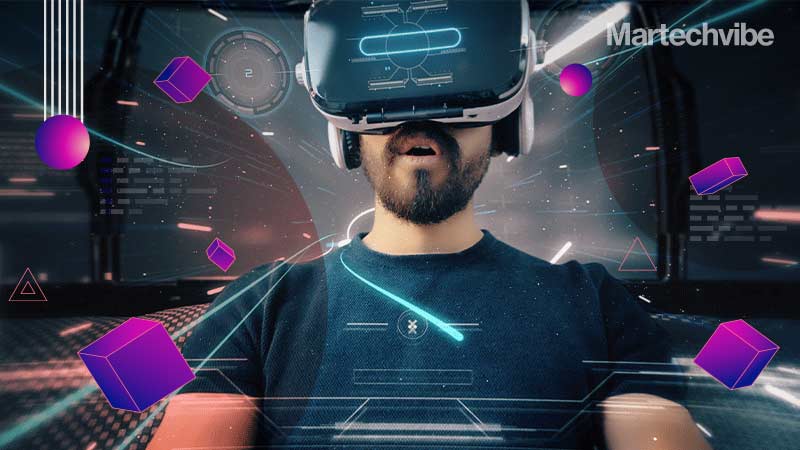Adobe’s On A Mission To Help Brands Be Metaverse-Ready
From new collaboration to immersive 3D capabilities, Adobe introduces its metaverse-driven plan to empower brands Adobe offers capabilities for creating immersive 3D experiences, eCommerce platforms and digital experiences. Building on this momentum, the company announced new innovations for creating and delivering more engaging and realistic virtual experiences at the Adobe Summit – The Digital Experience […]
Topics

From new collaboration to immersive 3D capabilities, Adobe introduces its metaverse-driven plan to empower brands
Adobe offers capabilities for creating immersive 3D experiences, eCommerce platforms and digital experiences. Building on this momentum, the company announced new innovations for creating and delivering more engaging and realistic virtual experiences at the Adobe Summit – The Digital Experience Conference.
These integrations across Adobe Creative Cloud and Adobe Experience Cloud will bring Adobe’s 3D content creation and personalisation solutions to various industries.
Adobe also unveiled collaborations with brands – including The Coca-Cola Company, Epic Games, NASCAR and NVIDIA – on an array of technology advances and experiences that include the key ingredients of metaverse readiness:
3D and other immersive content creation: Smart brands are using 3D design workflows to make their product design and marketing content production better, faster and more efficient.
Virtual commerce experiences: Adobe works with businesses to power digital storefronts and eCommerce experiences. This expertise, as well as cross-cloud integrations, helps businesses to create immersive experiences.
Portability of virtual identities and possessions: Adobe is enabling users in the metaverse and other immersive experiences to design their unique online personas and possessions and use these customised assets inside of virtual worlds.
“The metaverse and other immersive experiences will only succeed if they are feature-rich, personalised, engaging and have interactive content,” said Scott Belsky, chief product officer and executive vice president of Adobe Creative Cloud. “To lead in the metaverse, brands should start creating 3D and immersive content now – it will not only prepare them for the future, but make their product design and creation of marketing and eCommerce assets better, faster and cheaper.”
The metaverse will power innovation, including a broad range of shared experiences addressing work, gaming, eCommerce, robotics, trainings for autonomous vehicles and climate change research.
As Adobe integrates its creative 3D and immersive tools with Adobe Experience Cloud, its first integrations planned are Adobe Commerce, Adobe Experience Manager, Adobe Analytics and Adobe Target. Previously, Adobe announced tighter integration of 3D content, effects and capabilities across its portfolio of Creative Cloud applications.
“As the web evolves, there will be greater demand than ever for data-driven, immersive experiences that include eCommerce, multi-user functionality and the ability to own and export customised versions of your identity and possessions across virtual worlds,” said Anil Chakravarthy, president, Digital Experience Business, Adobe. “Adobe Experience Cloud will be integral to brands’ efforts to build personalised, immersive experiences such as these.”
Customer Momentum
“At Coca-Cola, we’re committed to preserving the craft of creativity and design – in the real world and the digital world too,” said Rapha Abreu, global vice president of design, The Coca-Cola Company. “Adobe helps bring digital innovation to our physical products, and we look forward to working together to extend the magic of Coca-Cola to the rapidly expanding virtual world with immersive design experiences.”
“Whether you’re a game developer, architect or automotive designer, consumers expect truly immersive interactive experiences,” said Marc Petit, vice president, Unreal Engine Ecosystem at Epic Games. “Together with Adobe, we’re developing new tools that empower creators to build real-time 3D experiences that push the boundaries of photorealistic immersion.”
“At NASCAR, we’re committed to giving our fans the ultimate experience, whether they’re at the track, watching from home or engaging with us in the virtual world,” said Wyatt Hicks, managing director, NASCAR Digital Media. “We’re enthusiastic about partnering with Adobe to continue delivering immersive fan experiences across all platforms.”
“NVIDIA is working at the cutting-edge to build foundational technologies that allow enterprises, developers and artists to create and connect within virtual worlds. Working with Adobe to evangelise open, common 3D standards like Universal Scene Description will empower our design and engineering teams to bring 3D assets across virtual worlds,” said Richard Kerris, vice president of the Omniverse development platform at NVIDIA.
Metaverse Playbook
Adobe also unveiled a “Metaverse Playbook” to help brands adapt to the demands of designing in 3D and immersive environments and streamline marketing production and product design. Additional areas included in the playbook are new insights on the core ecosystem of partners to fast-track brands on their road to metaverse readiness.
Later this year, Adobe will expand its 3D capabilities in Adobe’s Substance 3D Collection, with an all-new Substance 3D Modeler app, making the collection the only end-to-end solution for 3D visuals and experiences. Adobe’s 3D tools are used extensively in top immersive games, including Fortnite, Roblox, Halo and Flight Simulator. They are also used to create exceptional entertainment experiences, including Dune, The Mandalorian and Blade Runner 2049.
During “Sneaks”, Adobe previewed cutting-edge immersive tools from Adobe’s research labs, including tools that will empower businesses to bring eCommerce experiences to the metaverse and other virtual, digital experiences.
Specifically, Adobe will preview AR shopping capabilities that enable marketers to embed AR markers into digital images on their websites. Customers will be able to take a photo of a product online and automatically see its exact size and fit rendered in their home – merging the virtual and physical worlds.
If you liked reading this, you might like our other stories
Can You Balance Privacy & Personlisation?
Your Brand Needs a Behaviour Detective






